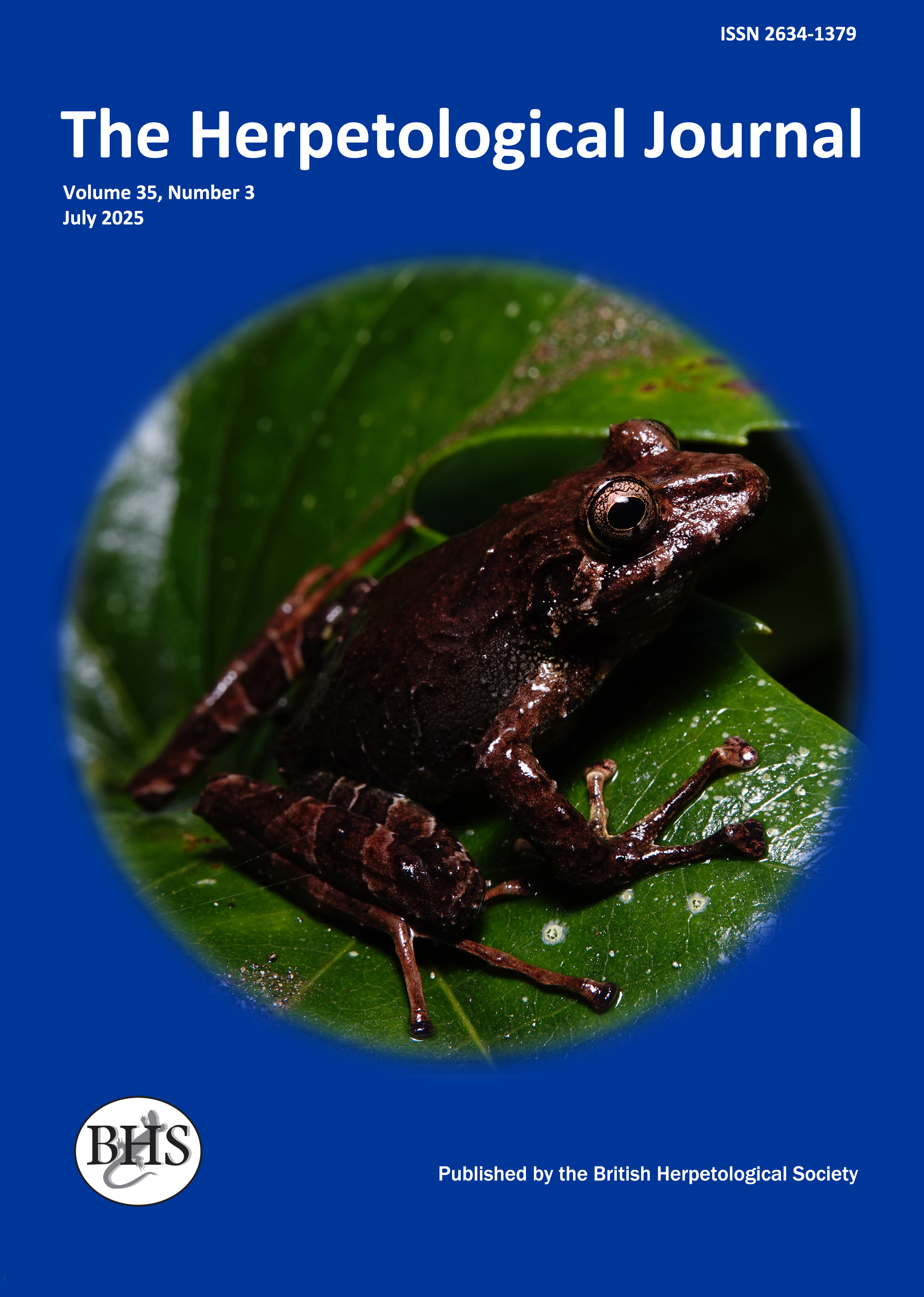
The Herpetological Journal
The Herpetological Journal is the Society's prestigious quarterly scientific journal. Articles are listed in Biological Abstracts, Current Awareness in Biological Sciences,Current Contents, Science Citation Index, and Zoological Record.
ISSN 0268-0130
2021 Impact Factor from Clarivate for the Herpetological Journal is 1.194, an increase of 0.332 from 2020.
pdf 02. Structure of wetland-breeding anuran assemblages from the southern section of the Paraná river, Argentina
1578 downloads
Open Access
pp. 173-184
Authors: Sanchez, Laura C.; Peltzer, Paola M. & Lajmanovich, Rafael C.
Abstract: Knowledge of anuran reproduction is necessary to understand the organization of their communities and is a first step in developing management strategies in order to conserve amphibian diversity. We studied the reproduction of anuran species in a wetland reserve – Pre-Delta National Park (PDNP) – on the southern section of the Paraná river in the mideast of Argentina, examining its structure at temporal and spatial levels. We also analysed the influence of environmental factors on breeding activities at habitat and landscape levels. Six waterbodies in the PDNP were monitored from September 2005 to March 2006. Five habitat variables (maximum pond width and length, maximum depth, shore vegetation and presence of predators) and three landscape variables (monthly air temperature, river level and rainfall) were recorded every month and analysed through multivariate analysis. Principal coordinate analysis (PCoA) indicated the existence of four breeding periods. The most frequent breeding call location was the edge of a pond (56.8%), over floating and marsh plants. The presence of tadpole predators and pond width were the main habitat variables that influenced breeding activities. In addition, the number of species with calling males per month was positively correlated with the level of the river which supplies water to ponds. Breeding anuran species co-occurred less often than expected by chance, and exhibited breeding segregation at temporal and spatial scales. The diverse evidence regarding temporal and spatial breeding activities demonstrates the importance of segregation for anuran reproduction in the area studied. We suggest that the nature of breeding interactions can be affected by habitat preference and reproductive strategy, as well as by abiotic (e.g. pond width), biotic (e.g. predators) and landscape (e.g. hydrological variation) variables.
Keywords: REPRODUCTION, PRE-DELTA NATIONAL PARK, HABITAT USE, AMPHIBIANS, CO-OCCURRENCE

